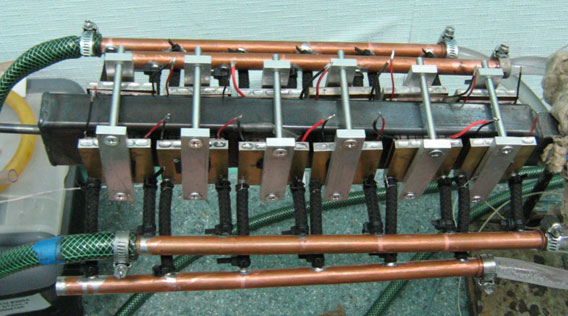Development and research of the two-phase medium-temperature thermosyphon for the implementation of the waste streams heat recovery in the pumping units of the gas pipeline
Gas compressor units operate with large thermal emissions (up to 20 MW), high temperature (300 ° C or more) and, at the same time, they require a considerable amount of electricity for the maintenance of the own pumping stations equipment of the Ukrainian gas pipeline. Recycling streams from the high pumping units and outgoing heat conversion into electric energy can be carried out using thermoelectric generators. Way of receiving and heat transfer from the hot gases and provide isothermal surface of the hot and cold junctions of the thermoelectric generators is needed for effective use of them. The problem of increasing the efficiency of the pumping stations of main gas pipelines was solved by using a two-phase heat transfer device (medium-temperature thermosyphon).
Determination of the coefficients of heat transfer values in the heating and condensation zones of the closed two-phase heat transfer device with medium coolant temperature, and determination the maximum value of the transmitted and magnitude heat fluxes, determination the thermal resistance between the heating and condensation zones, as well as their dependence on the operating parameters of the thermal device has allows to create a specimen of medium-temperature thermosyphon with the DOWTHERM working fluid for the heat recovery installation with temperature of a waste gas from 300 ˚C to 400 ˚C.
The performed amount of this work allows to create the new type installation for heat recovery of exhaust gas based on medium-temperature thermosyphons and thermoelectric generators. According to the results of work has been designed and manufactured mock-up of the installation module base on the one thermosyphon, and heat engineering tests for his basic operating parameters were carried out. The use of such heat recovery units based on 60 medium-temperature thermosyphons with general efficiency of 4% will be allow to obtain additional electricity to 61,320 kW • h, which could save natural gas at a rate of 6586 m3. It’s corresponds to a reduction of greenhouse gas emissions by 92 tones of CO2.

| Attachment | Size |
|---|---|
| 361.25 KB |




